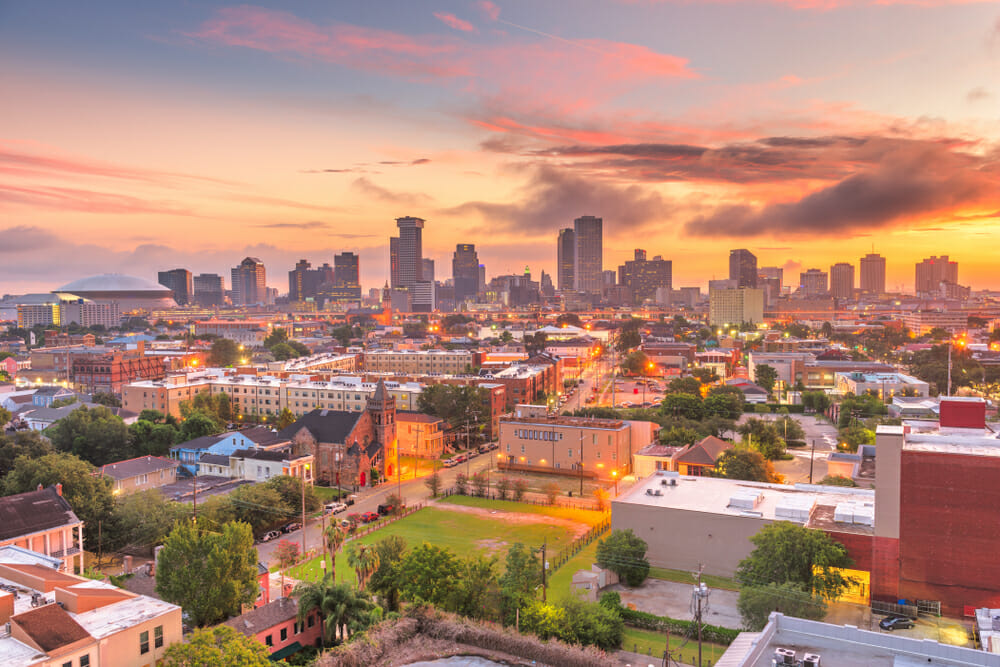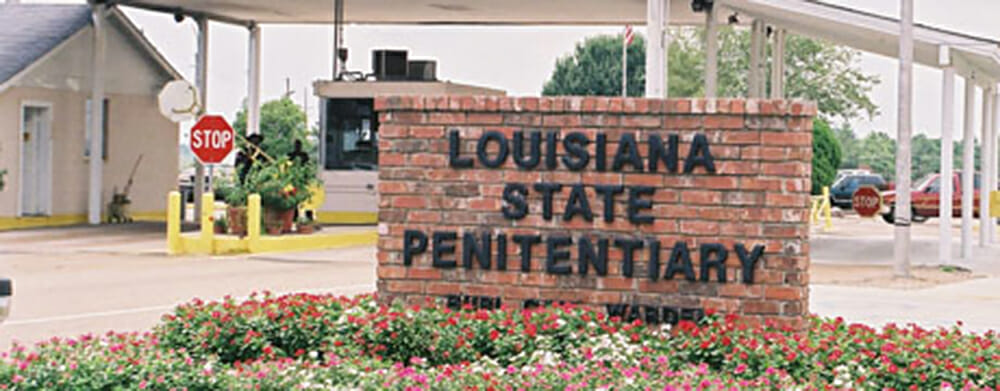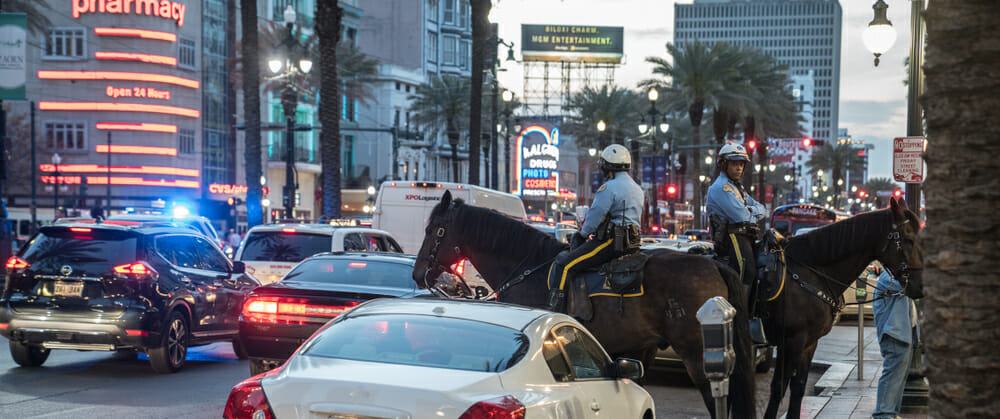
Criminal Rehabilitation and Justice in Louisiana
The following sections summarize crime data, criminal justice methods, prison information, incarceration rates, recidivism, and alternatives to incarceration in Louisiana.
Louisiana Prison Population Statistics
Perhaps the best way to understand the condition of any region’s criminal justice system is to examine its overall prisoner population and the percentage of the region’s population that is incarcerated. One begins this venture by asking:
- How many prisoners are in Louisiana?
- Which is the largest prison in Louisiana?
- How many prisons are there in Louisiana?
According to the Bureau of Justice Statistics, Louisiana has the second-highest incarceration rate in the nation, ahead of Oklahoma but behind Mississippi. That makes Louisiana’s incarceration rate significantly higher than the U.S. rate. Further, Louisiana has a high recidivism rate, suggesting the state’s prisons suffer from a revolving-door crisis of inmates being released, reoffending shortly after, and then reentering prison.1
The National Institute of Corrections reports that Louisiana has 111 jails in 64 parishes, one of the highest concentrations of jails in the nation.2 The jail population as of 2019 was 32,730. Louisiana also operates nine state prisons with a combined prisoner population of 31,609. Louisiana operates its jails and prisons with a staff of 4,779 employees on a budget of $734,795,732. According to the Urban Institute, Louisiana’s Department of Corrections is the 7th costliest item in the state’s annual budget. Louisiana spends about $30,168 per inmate per year.3
The incarceration rate in Louisiana is 680 per 100,000, one of the highest in the nation (and in the world). In addition to the over 63,000 individuals held in jails and prisons in Louisiana, the state manages 28,283 individuals on parole and 33,741 on probation. It’s worth mentioning that even though Louisiana locks up 680 of every 100,000 of its residents, the state only records 549 violent crimes for every 100,000, indicating Louisiana is locking up thousands of residents for nonviolent crimes.
“For more than two decades, Louisiana had the highest incarceration rate in the nation, fueled partly by stiff mandatory sentencing laws and restrictive parole practices, including for lower-level, nonviolent offenders.”
Many scholars believe Louisiana’s high incarceration rate is an overly harsh response to crime. Quoting a report titled Louisiana’s Reinvestment Into Recidivism Reduction and Victim Services that looked into Louisiana’s efforts to improve the state’s prison system, “For more than two decades, Louisiana had the highest incarceration rate in the nation, fueled partly by stiff mandatory sentencing laws and restrictive parole practices, including for lower-level, nonviolent offenders. By 2017, state spending on corrections was approaching $700 million, yet this increased investment was not reducing recidivism.” That report’s concern is bolstered by an observation of Louisiana’s incarceration trends over time, particularly regarding soaring prison sentences. In short, investments in punitive or harsh approaches to crime in Louisiana have not produced positive results.4
Since the turn of the century, the jail population in Louisiana has leveled off and remained stable. However, the prison population, where inmates serve longer sentences, has soared. That suggests offenders are more likely to be convicted than in previous years, as they are being taken out of pretrial holding, convicted, then sentenced to long prison terms instead of short terms in local jails, community corrections, or alternative-to-incarceration programs.

Louisiana’s jail and prison facilities are spread out across the state.5 The largest is Angola, also called the Louisiana State Penitentiary.6 It is the largest maximum security prison in the United States, with a prison population of 6,300 and a staff of 1,800. It is located in Angola, Louisiana.
Louisiana is home to four federal prisons and two federal prison camps. There are two private prisons in Louisiana, which are expensive for Louisianans. The state’s contract with the prisons requires Louisiana to pay the prisons for 100% occupancy even if the prisons are not operating at that occupancy.
Crime Data in Louisiana
State and federal agencies collect and study crime rates in Louisiana. According to the Bureau of Justice Assistance, Louisiana records about 24,000 violent crimes annually. That includes about 500 murders and manslaughters, 2,000 to 3,000 rapes, 5,000 robberies, and 16,000 aggravated assaults. And as mentioned earlier, that figure translates to about 549 violent crimes per 100,000 residents. The state also reports 165,000 property crimes; mainly burglaries, larcenies, and motor vehicle theft.7

The Crucial Metric, Recidivism in Louisiana
Statistical data on recidivism paints perhaps the most accurate picture of a state’s criminal justice system, as recidivism shows us what percentage of the formerly incarcerated wind up back in prison. In short, what percentage of the formerly incarcerated population is not experiencing reform and rehabilitation from the state’s criminal justice system?
According to the Bureau of Justice Assistance, Louisiana’s recidivism rate is 35.1%, meaning the criminal justice system is not working for at least one-third of Louisiana offenders who go through it. Further, that is likely a conservative estimate. Another report found that 44.4% of inmates released in 2011 had returned to prison by 2016.8
Criminal Reform in Louisiana
Criminal rehabilitation in Louisiana is the goal of the state’s corrections department. The Louisiana criminal justice system, while requiring reform of its own in some ways, still holds to the mission of helping offenders overcome the underlying issues that led them to crime in the first place. Some of the rehabilitative modalities used in Louisiana prisons include:
- Educational programs
- Behavioral counseling
- Group therapy sessions
- Workforce training and prison employment
- Vocational courses and post-incarceration preparation for parolees
- Drug and alcohol rehabilitation services for incarcerated individuals who struggle with addiction
As a part of its efforts to improve prison effectiveness, Louisiana should implement more evidence-based rehabilitative modalities for prisoners, especially those who seek to get to the bottom of why the offender committed the crime in the first place. Helping offenders get to the bottom of their criminal behavior and overcome it would greatly reduce recidivism.
Alternatives to Incarceration in Louisiana
Alternatives to prison are crucial to reducing the comparatively high levels of incarceration in Louisiana and the questionable success of such methods. Given that Louisiana has a particularly harsh mandatory minimum sentence model and particularly punitive approach to even low-level, nonviolent crime, implementing alternatives to incarceration would be a good way to avoid exposing tens of thousands of Louisiana residents to the prison system and the dangerously high recidivism rates that come from that.
Looking to the future, policymakers must invest heavily in educational programs inside prisons in Louisiana. Further, corrections professionals must update and improve rehabilitation programs inside prisons in Louisiana to ensure inmates are experiencing real, lasting, effective rehabilitation.
Source:
- BJS. “Prisoners in 2020 – Statistical Tables.” Bureau of Justice Assistance, 2021. bjs.ojp.gov
- NIC. “Louisiana 2019.” National Institute of Corrections, 2019. nicic.gov
- Urban. “Project Louisiana.” Urban Institute, 2022. urban.org
- CRJ. “Louisiana’s Reinvestment Into Recidivism Reduction and Victim Services.” Community Resources for Justice, 2022. crj.org
- LA DPS&C. “Department Facilities.” Louisiana Department of Public Safety & Corrections, 2022. doc.louisiana.gov
- LA DPS&C. “Louisiana State Penitentiary.” Louisiana Department of Public Safety & Corrections, 2022. doc.louisiana.gov
- BJA. “Louisiana.” Bureau of Justice Assistance, 2014. bjafactsheets.iir.com
- SPLC. “Fight to cut Louisiana’s high mass incarceration rate must continue.” Southern Poverty Law Center, 2018. splcenter.org
Related Articles
How Mississippi Is Changing its Tune on Criminal Justice Reform
Over the last 15 years, Mississippi has passed several criminal justice reform laws to reduce recidivism and provide better results for offenders. In many ways,...
Read more >>
Christmas Eve in Texas
Since taking this course, I find myself making better choices and putting more thought into things, I find myself talking to people with more respect...
Read more >>
Journey from Hate and Violence to Hope and Faith
My success story starts when I took and completed the Criminon course The Way to Happiness. I’ve been incarcerated in prison since I was 18...
Read more >>




